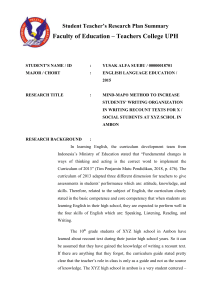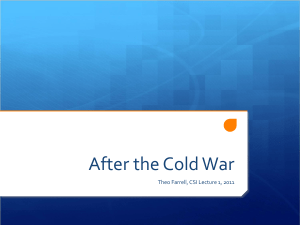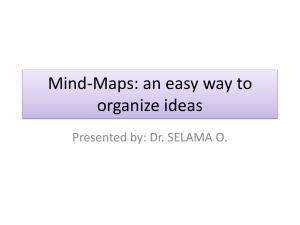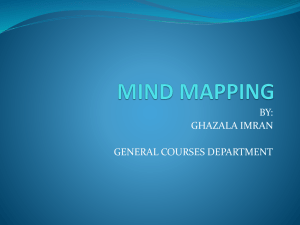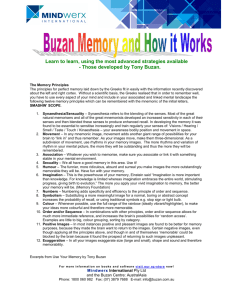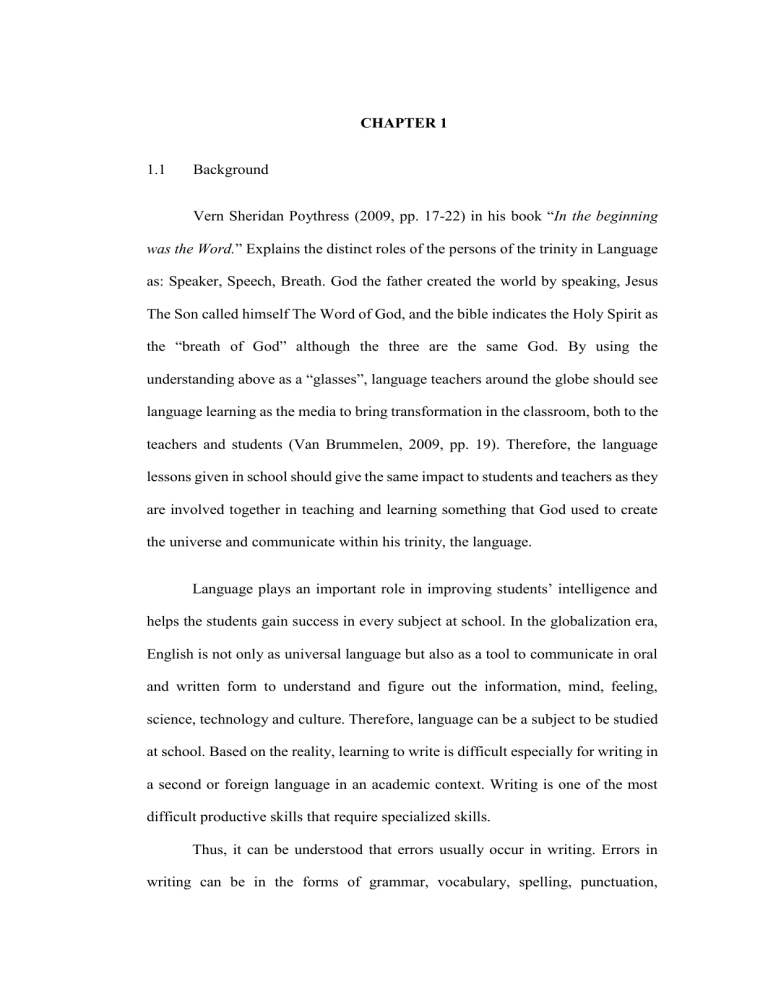
CHAPTER 1
1.1
Background
Vern Sheridan Poythress (2009, pp. 17-22) in his book “In the beginning
was the Word.” Explains the distinct roles of the persons of the trinity in Language
as: Speaker, Speech, Breath. God the father created the world by speaking, Jesus
The Son called himself The Word of God, and the bible indicates the Holy Spirit as
the “breath of God” although the three are the same God. By using the
understanding above as a “glasses”, language teachers around the globe should see
language learning as the media to bring transformation in the classroom, both to the
teachers and students (Van Brummelen, 2009, pp. 19). Therefore, the language
lessons given in school should give the same impact to students and teachers as they
are involved together in teaching and learning something that God used to create
the universe and communicate within his trinity, the language.
Language plays an important role in improving students’ intelligence and
helps the students gain success in every subject at school. In the globalization era,
English is not only as universal language but also as a tool to communicate in oral
and written form to understand and figure out the information, mind, feeling,
science, technology and culture. Therefore, language can be a subject to be studied
at school. Based on the reality, learning to write is difficult especially for writing in
a second or foreign language in an academic context. Writing is one of the most
difficult productive skills that require specialized skills.
Thus, it can be understood that errors usually occur in writing. Errors in
writing can be in the forms of grammar, vocabulary, spelling, punctuation,
organization, and cohesion. Based on the observation at XYZ Senior High School
in Ambon, there were many problems that were found in writing skill. The students
lacked vocabulary. It was because the teaching-learning process only depended on
the strength of memory. When the researcher conducted an observation in the
classroom, the teacher instructed the students to memorize all the unfamiliar words
on the blackboard and in the next meeting the teacher tested some of students to say
the words and mention their meaning. The students found difficulties to start
writing. It was because the students were often confused to express their ideas in
writing. Another problem was that they have low understanding of grammar. To
solve the problems above, the students need a technique to help them understanding
the new words easily. The technique is a tool to achieve a goal. The technique that
is needed to improve their writing skill is a technique that can make the students
easy in expressing their ideas, to arrange the words to be a good sentence. One of
the techniques that can make the students find it easy to express and organize their
ideas is the mind mapping. Mind mapping is a method to make the students find it
easy to absorb information into their brain and take it out from their brain. Mind
mapping is a way to 3 note effectively and creatively and it will map the ideas
literally (Buzan, 2006). This technique can improve students’ creativity and make
them happy in learning, because it consists of colors, pictures, and some key words
that can also make them find it easy to learn English especially in writing skill. That
is why the researcher used the mind mapping technique to improve students’
writing skill. It is because there are some benefits that are offered by the mind
mapping technique in the English teaching-learning process, especially in writing
skill.
1.2
Issues
Based on the background presented above, the problems are formulated as
below:
1) Does the use of Mind-Map® increase students’ writing organization in
writing recount texts of the class of AB3 on XYZ Senior Highs School
in Ambon?
2) How does Mind-Map® increase the students’ writing organization in
writing recount texts of the AB3 class on XYZ Senior Highs School in
Ambon?
1.3
Purposes
According to the problems above, then the purpose of this research is:
1) To aply the use of Mind-Map® to increase students’ writing
organization in writing recount texts of the class of AB3 on XYZ Senior
Highs School in Ambon
2) To analyze the significance of the use of Mind-Map® will increase
students’ writing organization in writing recount texts of the class of
AB3 on XYZ Senior Highs School in Ambon
1.4
Advantages
1) For teachers: gives input in using Mind-Map® as one of teachers’tools
in increasing students’ Writing Skills on writing recount texts.
2) For other researchers: as a reference in holding research about the same
problem or the more complex ones.
3) For the researcher: as a reference in facing the same problem in the next
teachings.
1.5 Operational Definition
1) Mind-Map® (invented by Tony Buzan) is a visual representation of
hierarchical information that includes a central idea surrounded by
connected branches of associated topics. It is a diagram used to visually
organize information. A mind map is hierarchical and shows
relationships among pieces of the whole. It is often created around a
single concept, drawn as an image in the center of a blank page, to which
associated representations of ideas such as images, words and parts of
words are added. Major ideas are connected directly to the central
concept, and other ideas branch out from those major ideas (Buzan &
Buzan, The mind map book, 2009).
2) Writing is the process of using symbols (letters of the alphabet,
punctuation and spaces) to communicate thoughts and ideas in a
readable form. To write clearly it is essential to understand the basic
system of a language. In English this includes knowledge of grammar,
punctuation and sentence structure. Vocabulary is also necessary, as is
correct spelling and formatting. A writer may write for personal
enjoyment or use, or for an audience of one person or more. The
audience may be known (targeted) or unknown. Taking notes for study
purposes is an example of writing for one's self. Blogging publicly is an
example of writing for an unknown audience. A letter to a friend is an
example of writing for a targeted audience. As with speaking, it is
important to consider your audience when writing. There are many
different styles of writing, from informal to formal (Oshima & Hogue,
2010).
Bibliography
Buzan, T. (2006). How to mind map: Mind map untuk meningkatkan kreativitas.
Jakarta: PT Gramedia Pustaka Utama.
Buzan, T., & Buzan, B. (2009). The mind map book. Chicago: BBC Books.
Knight, G. R. (2006). Philosophy and eucation: An introduction in Christian
perspective. Michigan: Andrews University Press.
Oshima, A., & Hogue, A. (2010). Writing academic English: Level 4. Pearson
Longman.
Tim Penjamin Mutu Pendidikan, D. P. (2018, June 22). Buku Panduan Penjamin
Mutu Pendidikan. Surat Edaran Dirjen DIKDASMEN 2018. Ambon,
Maluku: Depdiknas.
Van Brummelen, H. (2009). Walking with God in the classroom: Christian
approaches to learning and teaching. Colorado: Purposeful Design
Publications.


